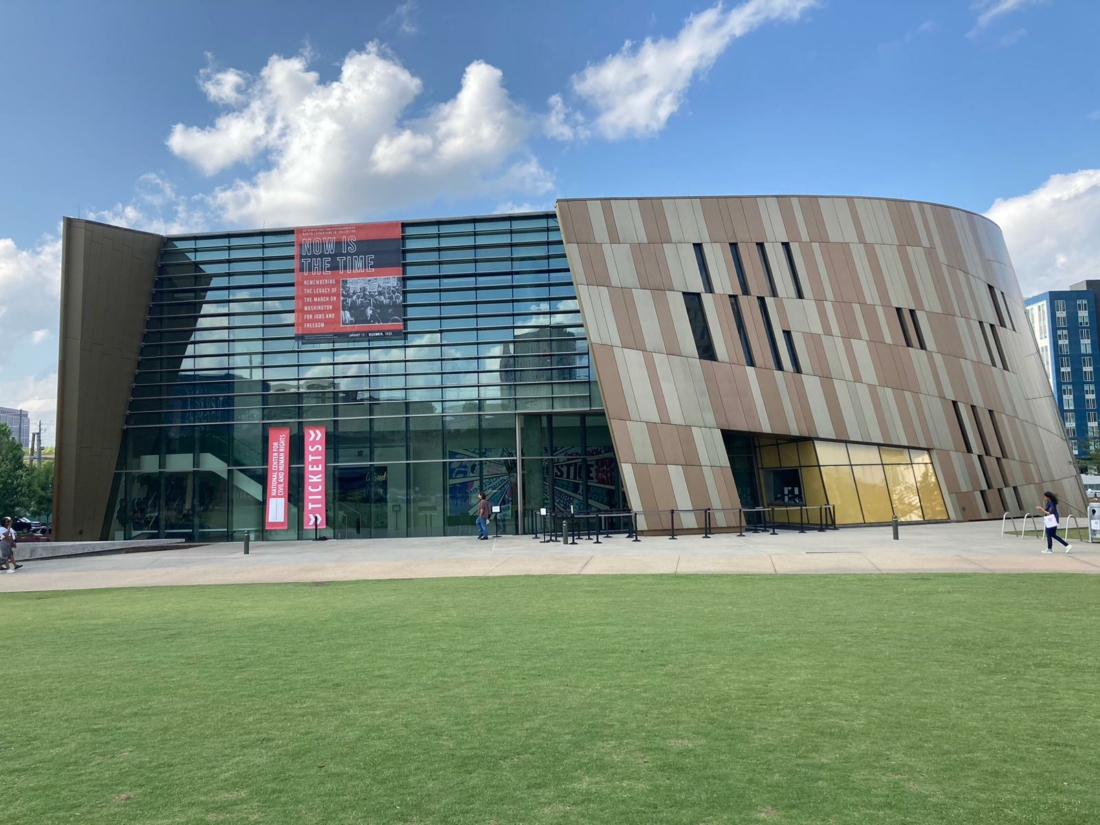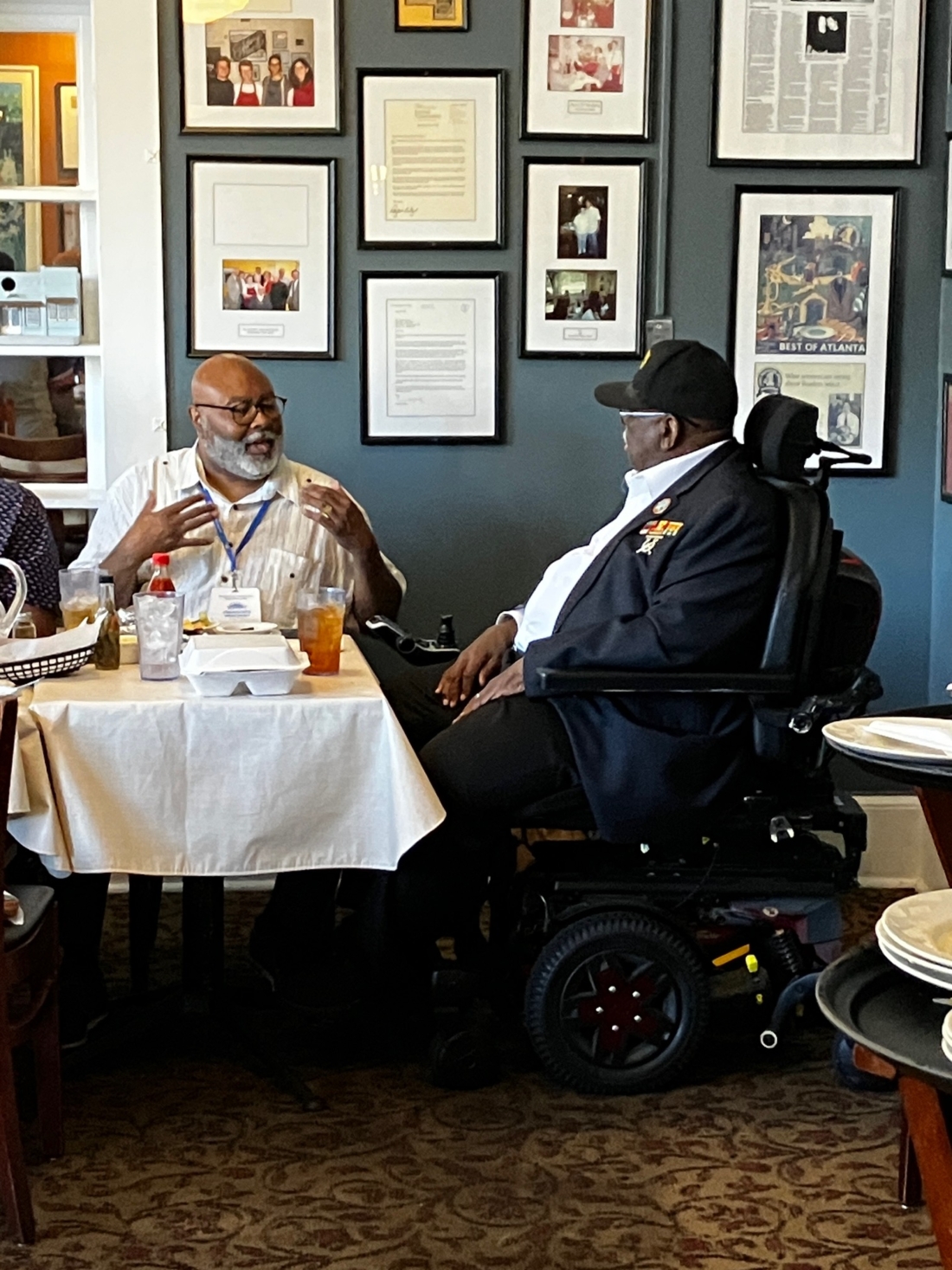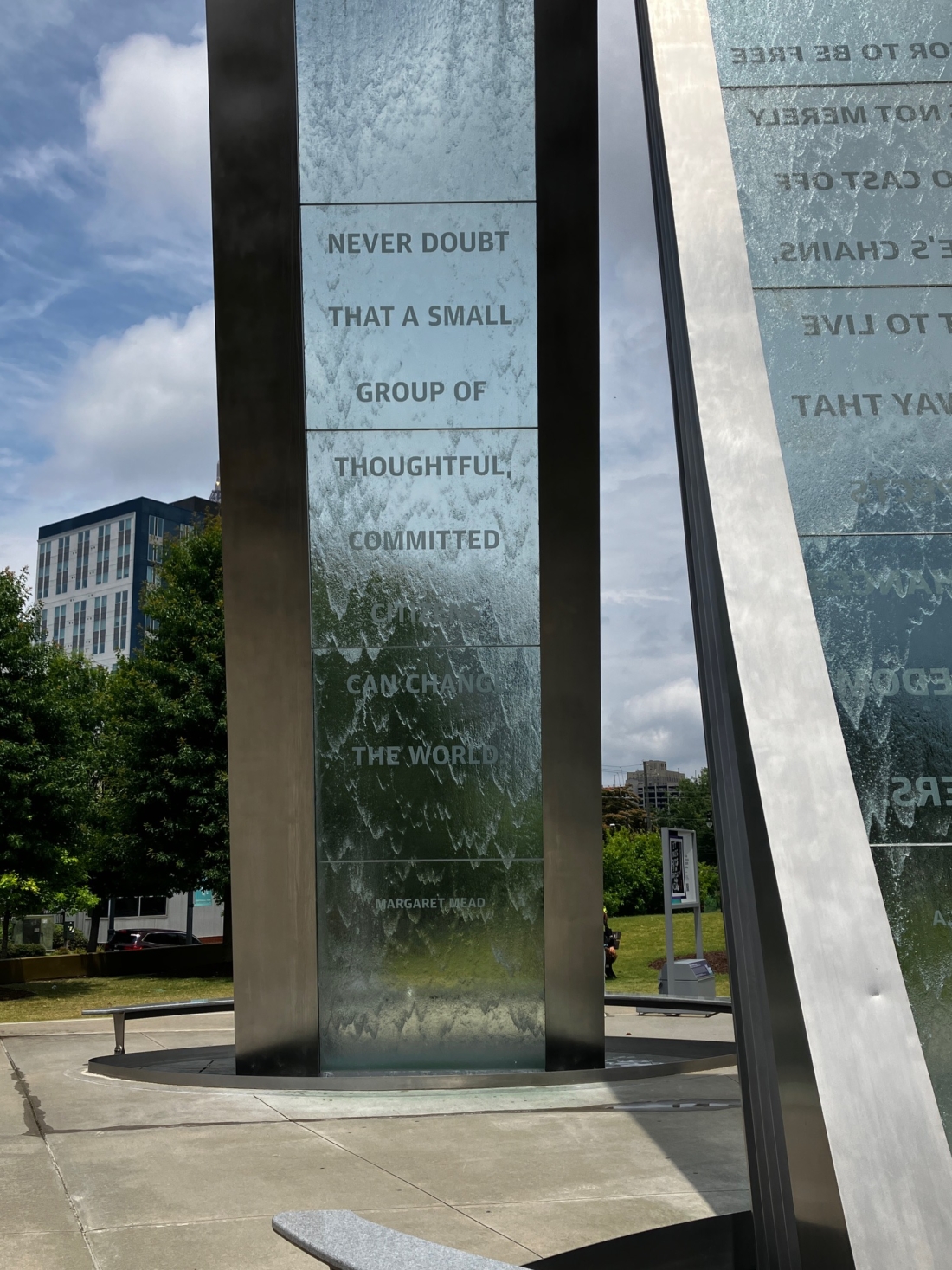Marching Down Freedom’s Road, Day 2
We rose early for a 7 am departure on our bus, headed towards Atlanta. The parallels rose in my mind to the era we are here to study, and the Freedom Rides of 1961.
Back then, racially mixed groups from “the North” risked their lives to ride buses through the segregated South, from Washington, DC to New Orleans, not knowing what awaited them along the way. As they disembarked at station after station to test whether the new federal non-segregation laws were being enforced in Southern states, they were met with at best, suspicion, and derision, and at worst, murderous intent towards their peaceful, justice-seeking goals.
In contrast, our racially diverse group boarded a well-appointed, air-conditioned bus, having stayed in the same hotel and eaten the same breakfast in the same dining room. We all had our electronic communication devices, so we could keep abreast of anything, from weather to restaurants (where all of us could be served) to historical documents and videos about the era offered to us by Michael, including an introduction to the hero we will meet at dinner tonight, who rode those buses into the unknown 62 years ago.
At the National Center for Civil and Human Rights, we had a much different “museum experience” than we did yesterday in Greensboro. As we discussed after our self-guided tours of the Civil Rights Era exhibit and the Human Rights exhibit into which it morphed, the two museums have very different constituencies, donors, and budgets, and thus look at the era from different angles. The International Civil Rights Center and Museum in Greensboro has a more grassroots feel, as it focuses on the hometown stories of A&T College and Bennett College students’ role in the origins of the sit-in movements, while the Atlanta museum takes on the Civil Right Era writ large, and with more interactive exhibits that a well-funded museum can afford, engages the visitors with many more stories. It then moves past the 50s and 60s into how the global concept of Human Rights grew out of that time into the present day. Neither is “better” or ”worse,” but they are quite different.
By far the highlight of the trip so far for me was hearing from Freedom Rider Charles (“Charlie,” “Bo,” “Tony,” and many other Southern nicknames) Person after a true Southern dinner at Mary Mac’s Tea House, the last surviving of 46 “Tea Houses” opened by women after World War II in Atlanta. At 80 years old, Charles told us in riveting and sharp detail about his nonviolence training and his fateful Freedom Ride in May 1961. He was on the Trailways bus that accompanied the famous Greyhound bus that ended up being firebombed in Anniston, AL. He was subsequently, with his fellow Freedom Riders, “stranded” in Birmingham when no drivers would take them to New Orleans as planned. He was almost killed by the mob there but was saved by a photographer’s flash stunning his attacker, and aided by a city bus driver who directed him “across the tracks,” where he called Rev. Shuttlesworth, for help. These are the stories of which adventure films are made.
I have worked with Holocaust survivors for 22 years, and like they do, Charles Person understands not only the memory but also the message that educators must understand to be able to share with the next generation. One of the most mind-boggling statements he made was that after his ordeal in Anniston, and having had to be evacuated from Birmingham at the request of the President, his mother encouraged him to join the military rather than continue in “the movement,” because she felt that would be SAFER for him!
So from a place of nonviolence, he joined the Marine Corps and served in combat in Vietnam! But that is another story…
Accompanied by his wife Joetta, he engaged my educator colleagues on how he could help their classes, perhaps over Zoom. This man is dedicated to educating youth, as is everyone on this trip. It was an evening where everything came together!




